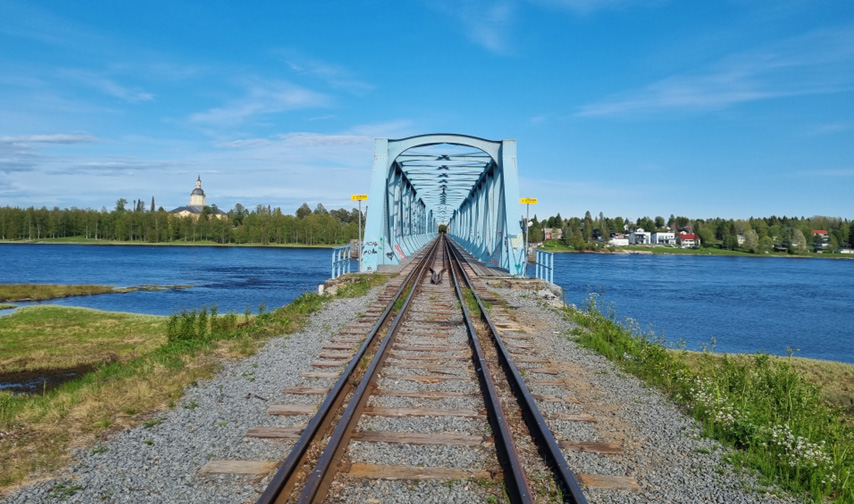The project improves the cost-effectiveness of rail transport and the competitiveness of industry. The aim is to enable the launch of passenger train traffic between Finland and Sweden and to improve the safety of level crossings. In practice, this means that the project involves electrifying the rail section from Laurila, Keminmaa across the Swedish border to Haparanda and doing a significant amount of work on signalling equipment and track alterations.
“The contract put out to tender by the Finnish Transport Infrastructure Agency also includes the electrification of Finnish tracks in Sweden, whereas the contract put out to tender by Trafikverket is responsible for replacing the passenger platform at Haparanda station”, project managers Jukka Päkkilä and Terhi Honkarinta sum up.
Negotiations and agreements are an integral part of the success of the project. For example, rail construction processes vary between the two countries, which is why reaching a mutual understanding in contracts and in practice is important to ensure the smooth progress of the project.
“We have made efforts to find and develop ways of working together, to discover where the boundaries of contracts are and who is responsible for what. Our cooperation will continue even after construction in the commissioning and use of the track”, explains Päkkilä.
Investing in interaction
The electrification project of the Laurila-Tornio-Haparanda railway section is the first railway project for Päkkilä and Honkarinta, who have worked in construction for some 15 years. The international dimension and the partners involved make the project a special one.
“The project is unique in many ways, so there is plenty to investigate. The work happens in two countries, which is why we have to be mindful of both countries’ practices with things like permit processes. For example, the plans for the Tornionjoki railway bridge had to be approved by both sides before we could proceed”, Honkarinta says.
“Another specialty is the fact that the electrification project of the Laurila-Tornio-Haparanda railway section is one of the projects receiving military mobility support to improve the conditions of cross-border rail traffic”, Honkarinta explains.
Challenges have included the difference in national legislations and track gauges, the language barrier and different guidelines issued by agencies. However, these challenges of the project, which started in 2020 with the track planning stage, have been tackled by investing in interaction.
“Interpersonal cooperation has been no problem. Everyone at Trafikverket is easy to work with. We have a shared goal and the will to find solutions and move forward”, says Päkkilä.
A wide range of experts from different departments of the Finnish Transport Infrastructure Agency have participated in this multifaceted project. In addition, permit processes have involved cross-border cooperation with Traficom and Transportstyrelsen.
“Piece by piece”
When the project is completed in late 2024, cooperation between the different parties will still continue.
“The commissioning will require instructions, updated safety and management systems and agreements on the management of infrastructure. These are things that we are actively addressing during and after the project”, Päkkilä sums up.
“It’s the same for construction and cooperation, we proceed piece by piece”, Honkarinta emphasises.

